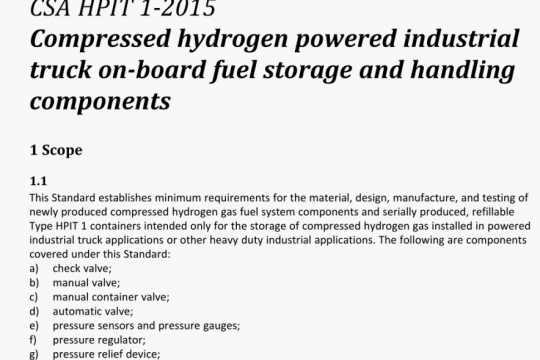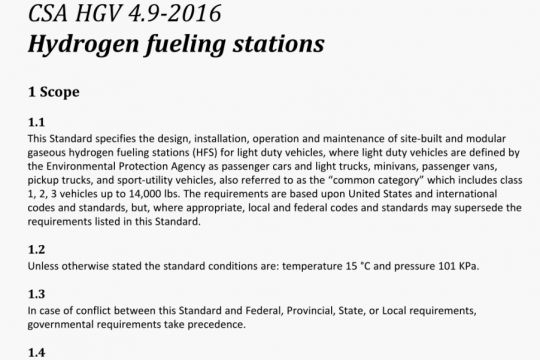CSA C22.3 pdf free download
CSA C22.3 NO. 1-2020 pdf free download.Overhead systems.
3 Definitions and abbreviations
3.1 Definitions
The following definitions shall apply in this Standard:
Across or cross — crossing over or under.
Active electrical equipment — equipment used in primary metering, transformer, regulator, capacitor, and recloser installations.
All-dielectric self-supporting (ADSS) fibre optic cable — a communication cable consisting of coated glass optical fibres contained in a protective dielectric fibre optic unit that is surrounded by, or attached to, suitable dielectric strength members and jackets.
Note: The dielectric properties of the outermostjacket can be of a class that is
a) suitable only for application in electric fields where the level of electrical stress on the jacket does not exceed .12 kV space potential; or
b) suitable for application in electric fields where the level of electrical stress on the jacket can exceed 12 kV space potential.
Some cables are manufactured with semiconducting jackets appropriate for either Items a) or b).
All terrain vehicle (ATV) — a motorized off-highway vehicle, also known as a quad, quad bike, three- wheeler, four-wheeler, or quadricycle, or similar vehicles.
Alongside or along — within the boundaries of the area under consideration or within a specified distance from it.
Ballast — crushed stone or gravel placed between and below the ties of railway tracks.
Bonding — the electrical interconnecting of metallic parts or conductors in order to maintain them at the same potential and achieve a desired distribution of currents within a grounding system.
Buckling — a structural instability that leads to a failure mode.
Note: This can happen when a force presses on a slender structure and makes it collapse.
Cable — an assembly of one or more insulated electrical or optical conductors, or a combination thereof, in a compact form, enclosed in a covering consisting of a combination of metal, plastic, or other materials used to provide mechanical and electrical protection.
Catenary parameter (C H/w) — the horizontal tension (H) in a conductor (expressed in N) divided by the conductor unit weight (w) (expressed in N/rn).
Circuit — a conductor or system of conductors through which electric current or optical energy is intended to flow.
Civil infrastructure — structures, trenches, and components used to support, enclose, and/or protect lines, cables, and equipment.
CSA C22.3 No. 1:20 Overhead systems
Clearance — the distance, under specified design conditions, between the nearest points of two objects at points where at least one object is movab’e.
Note: See also Separation and Spacing.
Climbing space — the space reserved to climb on a structure that permits line workers to have access to equipment and conductors located on the structure and that allows equipment to be hoisted to its desired position.
Coefficient of variation (COV) — the standard deviation of a sample divided by its mean. Common-structure crossing — a crossing of lines wherein a structure acts as a common support to, and forms an integral part of, each line at the point of crossing.
Communication cable — a cable used for a signal or communication service. Communication circuit — a circuit used for a signal or communication service. Communication conductor — a conductor in a communication circuit or cable.
Communication drop — the portion of a communication circuit that runs from the line to the service location.
Note: These are typically paired conductors, coaxial wires, or one or more optical fibres, designed to span distance similar to electric service conductors.
Communication line — see Line.
Conductor — a material used for the transmission of electrical, electromagnetic, or optical energy.
Coordinated electrical protection (as applied to supply and communication lines in close physical proximity) — the protective measures applied to the plant of both utilities so that
a) the supply and communication lines are designed, constructed, operated, and maintained in such a way that the supply voltage is promptly removed from the communication plant (including lines) by de-energization or other means, both initially and following subsequent breaker operations, in the event of contact between the supply line and the communication plant (including lines); and
b) in the event that the communication plant comes into contact with the supply conductors, the voltage and current impressed on the communication plant (including lines) do not exceed the safe operating limit of the communication protective devices.
Covered conductor bundled system — a type of electric supply-line construction consisting of an assembly of one or more covered conductors, separated from each other and supported from a messenger or supporting conductor by insulating spacers.
Notes:
1) Also known as “spaced aerial cable systems”.
2) Refer to Annex Efor engineering, design, and construction considerations.
Creep — the permanent elongation of suspended wire due to the effects of tension over a period of time.
Cross — see Across.
Crossarm assembly — an assembly that consists of crossarms and the devices used to attach them to a structure.CSA C22.3 pdf download.




